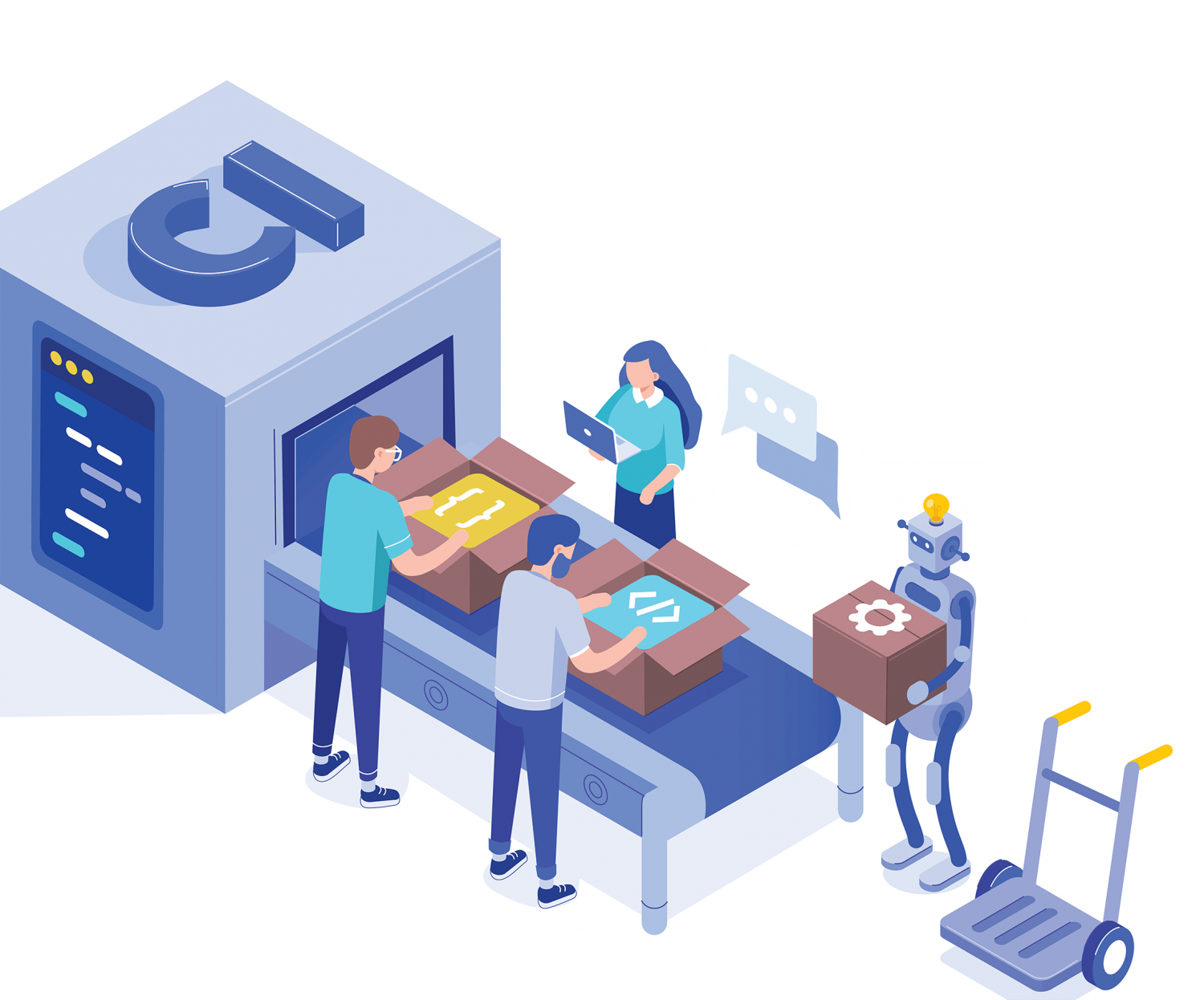You just launched your new product. It's your first one in the category, but it's a great item and your marketing efforts are generating buzz. What's more, you have major retailers, including big box stores, that want to stock it. It's an exciting time, but building a retail supply chain for new products is not without challenges.
Building a retail supply chain for new products: what it takes.
Taking an idea and turning it into something tangible is no small effort. But now that there is demand, it's time to focus on delivering supply in a way that creates lasting, valuable business relationships with retailers.
Here's a quick look at just some elements in the supply chain that need to be in place when you launch a new product:
- A manufacturer that can scale as demand increases
- Adequate inventory to meet initial demand
- A Third-Party Logistics provider (3PL)
- EDI software
Don't let manufacturing be a weak link in your supply chain.
Even a great product with clear advantages over category competitors won't succeed if initial demand cannot be met. In fact, a sudden spike in interest from retailers can put all kinds of stress on your company infrastructure and can even push you towards a crisis.
When a company is small, independent, or just entering the fray with a new product, the potential of high demand means that solutions should be in place in advance. If your company will be outsourcing production, ensure that the manufacturer or manufacturers you use won't be overwhelmed when Walmart suddenly wants to stock your item in 500 of its stores. (Hey, we can all dream, right?)
Even if you're not carried by every major retailer right from the start, you need a plan for manufacturing if you find yourself inundated with orders. Can your manufacturer ramp up production quickly? Do you need more than one manufacturer so you can scale as demand increases? Does it make sense to have manufacturers in different geographic locations?
Product failures aren’t always due to lack of interest. Sometimes they occur because there is more interest and sales than a company can manage. For independent inventors and small product-development companies, this is a serious consideration. Scaling up can be a complex process.
You need to be prepared for growth scenarios so you can protect the integrity of your brand. Manufacturing glitches create myriad problems, and damage vital business relationships.
Bottom line: plan for tomorrow so you're not caught off guard when high volume hits.
Find the right 3PL provider.
Ask any veteran of new product launches and they will tell you the importance of securing the services of the right Third-Party Logistics (3PL) provider.
When you first introduce your product, there's a good chance your warehouse will be your dining room. With any kind of success that situation soon becomes untenable, but it also doesn't make any sense to establish your own fulfillment center when you have only one, or a limited number, of products.
Fact is, even established companies turn to 3PL providers to warehouse inventory, pack products for shipment, and fulfill orders. When you have a nascent brand, a 3PL provider you trust is vital. Communications need to be error-free, and the order fulfillment process as close to flawless as possible.
Your 3PL provider should also ensure that your inventory counts are accurate and up-to-date. Retail trading partners, especially major big box stores, want plenty of warning if your stock is low, and will expect you to be able to quickly tell them when they can expect it to be replenished.
With the rise of direct-to-consumer shipping, retailers will list your products on their site without holding any inventory. That means it's up to you, the supplier, to ensure that you can deliver what their customers buy, because the retailer is showing your products on their website.

Use EDI software that automates and integrates.
Most major retailers rely on Electronic Data Interchange (EDI). It's a data format that allows stores to communicate quickly and efficiently with their suppliers, replacing things like paper invoices with electronic documents that speed the supply chain.
EDI, however, is not without complexity, and it's easy to allow it to become incredibly time-consuming. So time-consuming, in fact, that it distracts you from the marketing, product ideation, and sales efforts that drive your business forward.
Investing in the necessary infrastructure and personnel is eye-watering expensive—turning to an outside provider is a better alternative, especially for companies with nascent brands. But you'll want to make sure you make the right choice when you select an EDI software provider.
First, make sure the software is backed by a team of experts. If you have issues, you need to be able to resolve them as quickly as possible, and a qualified customer support team will be able to help you do that.
Next, make sure the software maximizes automation. You want to replace as many high-touch, error-prone, manual entry tasks with automatic data flow. The right provider lets you move documents in bulk, so multiple orders can be processed with just a few clicks.
Ensure that the EDI provider is taking all the steps necessary to ensure that you remain compliant with your trading partners. All retailers will have slightly different requirements. Some will require an EDI 856 or an EDI 850 while others will demand documents such as the EDI 810 or EDI 860. As you do business with the larger retailers, expectations only grow—the Walmart supply chain, for instance, demands precision and suppliers are graded on their ability to adhere to their standards.
A quality EDI software provider will make constant updates to ensure that you meet the requirements. Remember that compliance mistakes will result in costly chargebacks that any company will want to avoid, and they can damage productive trading relationships.
Finally, you want EDI software that integrates with the other data management software in your supply chain. As you grow, you may rely on an ERP like NetSuite or accounting software like QuickBooks to drive your business. EDI data should flow into those systems, and your software provider should have a development team to make that happen in a way that optimizes your workflow.
Connections to shipping providers are also crucial. Nothing is more frustrating than a shipment—the final step in your supply chain process—leaving your operation with an address error because the information was provided to the shipping provider through a Cut-and-Paste action.
For new products, retail supply chain management is critical.

Every year, countless exciting new products enter the consumer marketplace. It's easy to think that success or failure is decided by the ability of these new items to capture the attention of consumers.
But even the most innovative new product can't overcome a broken retail supply chain. In today's need-it-now retail environment, accuracy and timeliness are critical. Major stores are not willing to work with suppliers they can't count on. It's not just the expense of chargebacks—mistakes can lead to the loss of opportunities.
Bottom line: now that you have developed a great new product, make sure you have a supply chain that matches its promise. Ensure that you have manufacturing options, find the right 3PL provider, and make sure you have an EDI software solution developed and offered by people who are invested in your success.
Building a retail supply chain for new products isn't easy. But it's definitely worth it.





